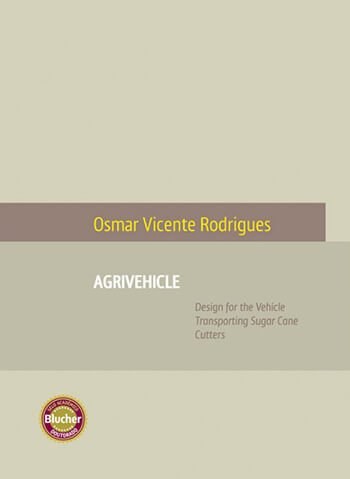Design for the vehicle transporting sugar cane cutters
Produto temporariamente indisponível
Sinopse
The aim of this research is to improve the transportation of rural workers - sugar cane cutters in particular - in off-road conditions. Appropriate design solutions will not only improve the workers´ health, safety, welfare and consequently their everyday life, but also reduce transportation costs and increase agricultural production. It is argued in this present thesis that a vehicle designed specifically for this purpose, and relevant to this transportation context, would generate a better-performing vehicle in off-road conditions. I suggest that a vehicle based on appropriate design solutions would increase mobility, ensuring better journey conditions, fewer accidents and consequent social damage for both the families of the victims and the government. To achieve the aim of this research, account was taken of the role of the vehicle as a mobile facility centre on the plantation, and key issues were raised regarding not only the vehicle and the workers in a transportation context. In order to do so, this thesis has been written from an interdisciplinary perspective, mapping the current situation, and establishing key criteria for new vehicle types. The study was organized around five main issues: User Analysis, Vehicle Analysis, Terrain Analysis, Economic Analysis and Design Solutions.
Osmar Vicente Rodrigues
Doutor em Design de Veículos pelo RCA - Royal College of Art em London UK (2008); Mestre em Engenharia de Produção e Sistemas pela UFSC em Florianópolis SC (1993); Bacharel em Desenho Industrial pela UNESP, em Bauru SP (1986). É associado do centro Innovation RCA do Royal College of Art, consultor internacional do Car Design Research, e vice-coordenador do LDMP - Laboratório Didático de Materiais e Protótipos da UNESP. Professor no curso de Design da UNESP Bauru desde 1988, com sua especialidade e pesquisa voltadas para o design de produto, com ênfase para as áreas de modelos e protótipos, materiais plásticos, e criatividade e inovação. Sua base profissional, experiência industrial e a combinação do design com negócios tem sido aplicadas ao longo de sua carreira, tanto no desenvolvimento de produtos e processos para a indústria, quanto no desenvolvimento de suas atividades acadêmicas.
Saiba maisSumário
1 INTRODUCTION
1.1 Statement of the Problem
1.2 Objectives
1.3 Research Design
1.4 Overview of the Study
2 BACKGROUND
2.1 Introduction
2.2 The Transportation of Sugar Cane Cutters in Other Countries
2.3 The Sugar Cane Industry in Brazil
2.4 The Transportation of Sugar Cane Cutters in Brazil
2.5 Hypotheses
2.6 Conclusions
3 USER ANALYSIS
3.1 Introduction
3.2 The Brazilian Sugar Cane Cutter
3.3 Transport Accidents
3.4 Health and Comfort Implications of Vibration
3.5 Methods
3.6 Field Research
3.7 Conclusions
4 VEHICLE ANALYSIS
4.1 Introduction
4.2 Alternative Vehicles for the Transportation of Sugar Cane Cutters
4.3 Analysis of Urban Bus Mechanical Parts
4.4 Technical Implications of Vibration
4.5 Field Research
4.6 Conclusions
5 TERRAIN ANALYSIS
5.1 Introduction
5.2 Terrain
5.3 Off-road Transportation
5.4 Field Research
5.5 Conclusions
6 ECONOMIC ANALYSIS
6.1 Introduction
6.2 Methods
6.3 Comparative Cost Analysis of Alternative Solutions
6.4 Other Transportation Costs
6.5 Conclusions
7 VEHICLE DESIGN
7.1 Introduction
7.2 Vehicle Design Analysis
7.2 Methods
7.3 Design Briefing
7.4 Ergonomics
7.5 Materials and Production Processes
7.7 Conclusions
8 CONCLUSIONS
8.1 Recommendations
8.2 Suggestions for Further Research
REFERENCES
Detalhes do livro
- Tipo: Livro Impresso
- ISBN: 978858039551
- Acabamento: Brochura
- Total de Páginas: 178 páginas
- Ano da Edição: 2011
- Peso: 0.5 kg







